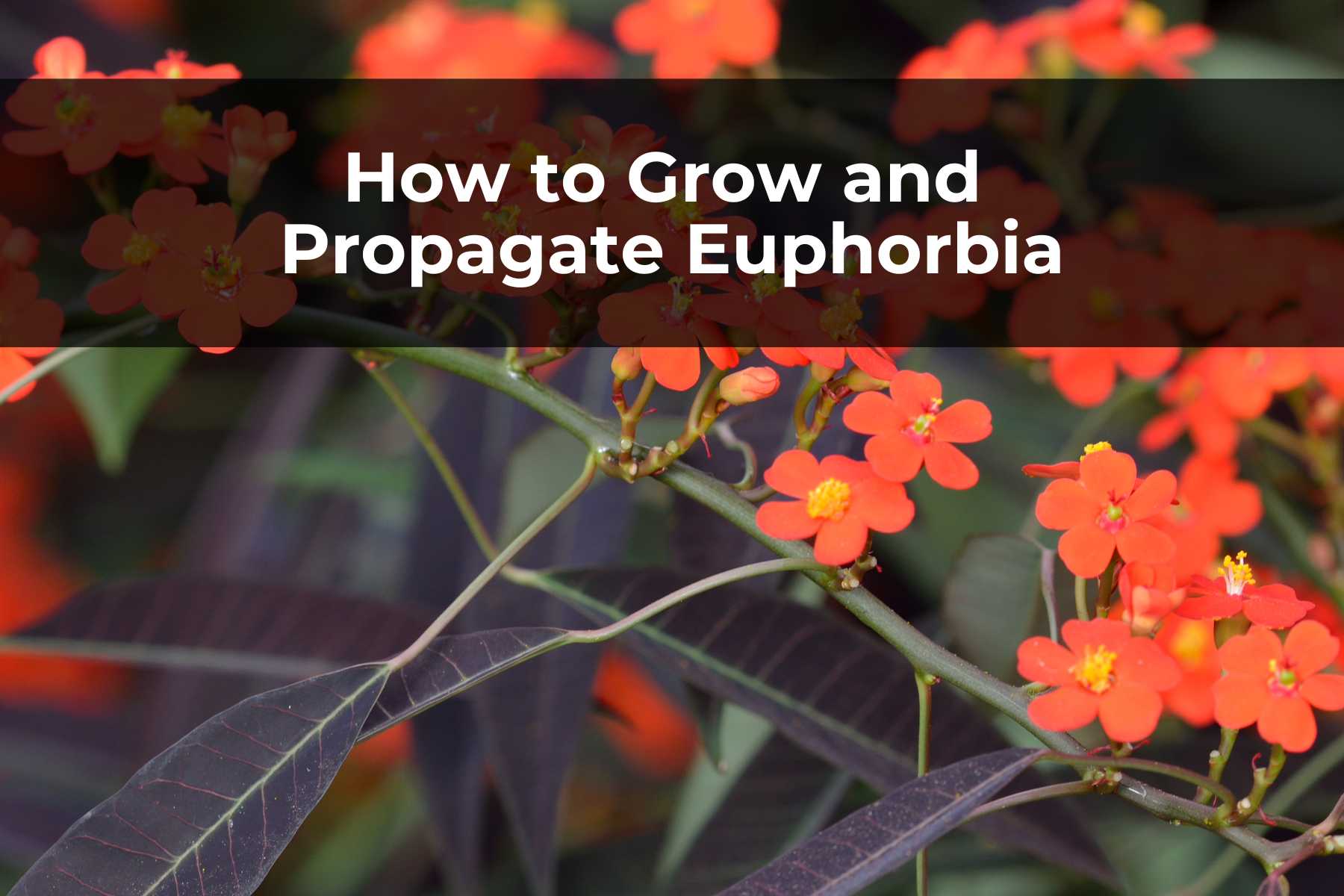Last Updated on April 4, 2024 by Real Men Sow
Euphorbia is large group of plants known for their strikingly designed architecture and brightly colored bracts. There are over 1000 species to choose from, and it’s difficult to give a comprehensive description of each one.
Many forms are attractive in their form, texture and shape. Although the foliage is beautiful all year, it looks best when the stems have been topped with small flowers and bracts.
- Foliage: The leaves are either evergreen or deciduous and have a narrow, lance-shaped shape. The leaves can be very colorful or variegated.
- Flowers: From the bracts which can be yellow, orange-red, or green-yellow, small insignificant flowers can emerge.
- Flowering Period: From spring to autumn (depending on variety).
- Soil: Light open soil (chalk sand or loam) that is moist but well-drained. It can be of any pH; avoid waterlogged conditions.
- Conditions: Full sun is best. You can grow facing any direction except north. Place it in a sheltered position.
- Habit: Bushy or low growing, spreading.
- Hardiness: The majority of herbaceous plants are hardy in the UK. The shrubby varieties are less tender and should be grown in warm greenhouses in regions that have colder temperatures.
- Toxicity: Ingestion of any part is highly toxic. The milky sap may cause irritation to the skin and eyes.
Planting and Growing Euphorbia
Easy to grow, it is resistant to drought and can tolerate poor soils. Plant in the spring or autumn in a sunny spot in well-drained soil. Once established, plant shrubby varieties in spring. Protect them from the cold winds. While most species prefer full sunlight, evergreens can tolerate light shade.
The taller varieties are good for border plants. Spurges are known for their bright, colorful bracts and vibrant foliage that blend well with other plants. They are great for raised borders and sites with steep slopes. Accepts both alkaline and chalk conditions.
Flower arrangers love tall stemmed forms. It is best to stop the flow of sap when cutting. To do this, dip the cut ends into very hot water.
Taking Care of Euphorbia
If the growing conditions are favorable, they will require very little attention. You can try moving them to another part of your garden if they aren’t doing well.
Pruning Euphorbia
Handling milky sap can cause irritation to sensitive skin so make sure you have gloves on. Spring trimming may be necessary for evergreens. Revert any shoots from variegated forms.
Once the foliage has begun to deteriorate, you can remove and deadhead old sub-shrub stems. This will enable new shoots to grow.
Pests and Diseases
Powdery mildew, gray mold (botrytis) and root and stem rots under wet conditions. Aphids, blackfly, caterpillars, and scale insects can all affect them.
Propagating Euphorbia
Plant seeds of species under glass in March to be ready for planting in May. In spring, take short basal cuts of sub- and herbaceous species. To prevent sap oozing, dip-cut surfaces in dry sand/soot. Divide perennial roots in autumn.
Popular Varieties of Euphorbia Grown in the UK
There are many species that can be used in gardens, including rockery, ground cover, and border plants.
Low Growing
Euphorbia myrsinites
A perennial that grows low, is covered in fleshy, gray-blue pointed leaves and topped by yellowish-green flowers in spring. Spread 1ft (30cm or more), height to 6in (15 cm).
Euphorbia pulcherrima ‘Poinsettia’
A well-known tender shrubby spurge that’s widely available in winter as a houseplant. The small yellow flowers are surrounded by distinctive bracts that are brilliant-red. There are also pink and white forms.
Medium Height
Euphorbia griffithi
A perennial herbaceous with reddish stems. It has dark-green leaves and red veins. May and June flowers. Popular cultivar ‘Fireglow” bears flame-coloured bracts during late spring and early Summer. Maximum height: 2.5 feet (75 cm).
Euphorbia epithymoides (polychroma)
An evergreen perennial that bears sulfur yellow flowers and bracts in April and May. Turning reddish in autumn. Spread to 18in (45cm) in height.
Euphorbia marginata (snow-on-the-mountain, variegated spurge)
A bushy upright annual with pale green leaves. As they age, the leaves become stippled and edged in white. Cut flowers are a great option. Spread to approximately 1ft (30cm), height to 2ft (60cm), or more.
Euphorbia amygdaloides var. Robbiae
An evergreen perennial that spreads well. It has upright stems and green leaves. From March through June, loose heads of lime-green bracts and flowers are produced. It makes a great groundcover. Shade tolerant. Maximum height is 2ft (60cm), spread to 3ft(90cm).
Euphorbia palustris (marsh spurge)
Has bright yellow bracts and yellow leaves in the early to mid-season. Maximum height: 3ft (90cm).
Taller Forms
Euphorbia Characias
An evergreen, vigorous shrub that produces column-shaped heads with pale yellow bracts. It has gray-green leaves. There are many cultivars available. Maximum height: 4ft (1.2m).
Euphorbia fulgens “Scarlet Plume”
A tender, lax evergreen shrub that bears bright scarlet bracts and has colorful bright bracts. Keep away from frost. Maximum height: 5ft (1.55m).
Euphorbia sikkimensis
A beautiful form of Euphorbia, has bright red young leaves and mid-green foliage. In summer, yellow cupped bracts are visible. Maximum height: 4.5ft (1.55m)

